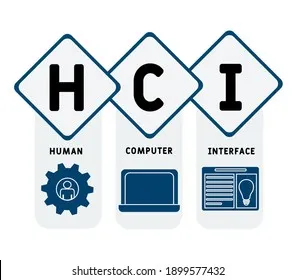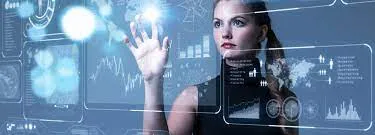Human-computer interaction (HCI) is research in the design and the use of computer technology, which focuses on the interfaces between people or the users and computers. HCI researchers observe the ways humans interact with computers and design technologies that allow humans to interact with computers in novel ways. Humans are the users of the computers. HCI should always consider about what users expect and need, what physical abilities and limitations they may have, how their perceptual systems work, and what they find attractive and enjoyable when they use computers. When humans interact with computers, they bring to the encounter a lifetime of experience. Designers must decide how to make products attractive without distracting users from their tasks.

2.What is brain storming relating to Human Computer Interaction?
Brainstorming is a technique used by design teams to create ideas for solving specific design problems. Teams address a topic using "How Might We" inquiries under controlled settings and in a free-thinking atmosphere. They generate a large number of ideas and connect them to uncover viable answers.

3.What is Contextual Inquiry?
Contextual inquiry is a UCD research method that is part of the contextual design process. A contextual inquiry interview is often arranged as a two-hour one-on-one engagement during which the researcher observes the user performing routine activities and discusses those activities with the user.

4.What is Making sense data?
Making Sense of Data instructs readers on the actions and considerations that must be made in order to accomplish a data analysis or data mining project successfully. In practically every topic of study, the author provides straightforward explanations that assist the reader to make timely and appropriate judgments based on evidence. Professionals can use a step-by-step strategy to help them thoroughly analyze data and implement results, resulting in better business decisions. This book successfully describes the issues that need to be considered, the procedures that need to be done, and appropriately treats technical topics with a complete collection of methodologies from both data analysis and data mining fields.

5.What is dynamic prototype in Human Interaction?
A prototype is an early sample, model, or release of a product designed to test a concept or process or serve as a replicable or learnable object. It's a term that's applied to a wide range of topics, including semantics, design, electronics, and software development. A prototype is created to allow system analysts and users to test and try out a new design in order to improve precision. Prototyping is used to create specifications for a real-world, working system rather than a hypothetical one. Creating a prototype (also known as materialization) is a phase in various workflow models that occurs between the formalization and evaluation of a concept.

6.Discuss the technology and change?
In economics, a technological change is an increase in the efficiency of a product or process that results in an increase in output, without an increase in input. In other words, someone invents or improves a product or process, which is then used to get a bigger reward for the same amount of work.

7.What is Human Computer Interaction?
Human-computer interaction (HCI) is an area of research and practice that emerged in the early 1980s, initially as a specialty area in computer science embracing cognitive science and human factors engineering. HCI has expanded rapidly and steadily for three decades, attracting professionals from many other disciplines and incorporating diverse concepts and approaches. To a considerable extent, HCI now aggregates a collection of semi-autonomous fields of research and practice in human-centered informatics. However, the continuing synthesis of disparate conceptions and approaches to science and practice in HCI has produced a dramatic example of how different epistemologies and paradigms can be reconciled and integrated in a vibrant and productive intellectual project.

8.Discuss the concepts of interaction design?
Interaction design is an important component within the giant umbrella of user experience (UX) design. In this article, we’ll explain what interaction design is, some useful models of interaction design, as well as briefly describe what an interaction designer usually does.

9.Differentiate the Computer and Human-Computer Interaction?
A computer is simply an electronic device that stores and processes data, usually in binary format, according to instructions in a programming program. Human-Computer Interaction, on the other hand, is the study, planning, and design of how people (users) interact with computers.

10.Discuss Data Gathering and Requirements Analysis with focus in HCI aspects?
The goal of data collection is to acquire enough precise and relevant information to create a set of stable criteria. It documents how users respond to and perform with a system or prototype. While the requirements analysis aids in the optimization of a system's interface with its users.

11.What are Interfaces Design and Prototyping?
Prototypes are an essential part of designing user flows and interfaces. They allow designers to show their design through an interactive and engaging product, resulting in a better understanding of the design for everyone involved.

